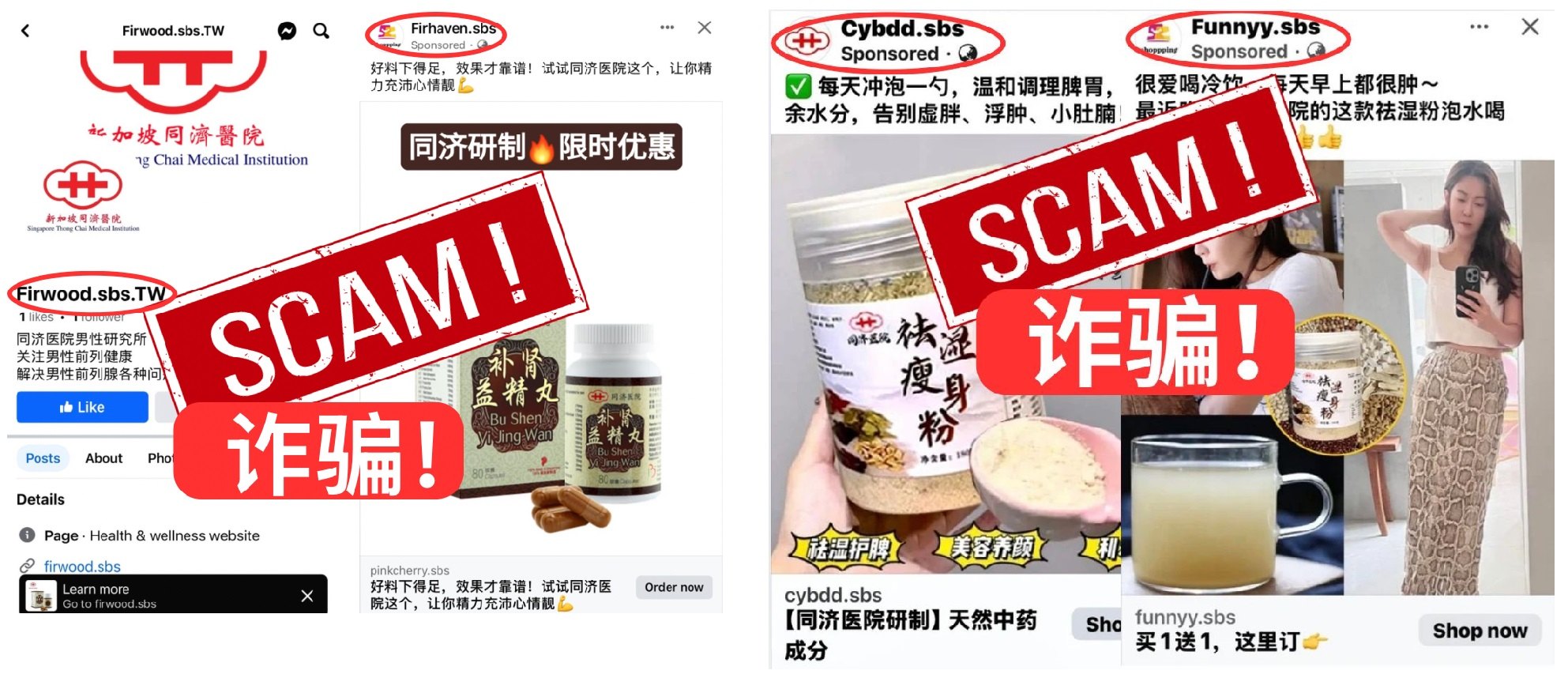慢性阻塞性肺病(COPD)是一种常见的慢性气道炎症性疾病。在2020年,全球估计有 4.8亿例COPD患者。预计到了2050年,这个数字即将增加23.3%,达到5.92亿患者。随着人口老化,COPD已成为一个引起关注的健康问题。虽然在医学上有常规的药物治疗,但临床疗效仍然不佳,所以COPD是全球五大死亡原因之一,占全球总死亡人数的5%。
西医治疗COPD最基本的方案是利用支气管扩张剂和皮质类固醇。支气管扩张剂有两种:一种是β受体激动剂,另一种是胆碱能拮抗剂。支气管扩张剂直接作用于支气管平滑肌,扩张气道并缓解气流受限。对于皮质类固醇,如布地奈德(budesonide)和倍氯米松 (beclomethasone),它们主要抑制炎症反应如PI3K、NF-κB或MAPK的激活,并且降低人体因抵抗感染所造成的气道阻塞。
COPD在中医属于 “肺胀” 的范围,病名最早出现在《黄帝内经》以及《丹溪心法》。 从中医角度,“肺胀”是一种虚证,但也夹杂了痰和瘀血等病理产物。《景岳全书》道:“病有标本者,本为病之源,标为病之变。其标在肺,其本在脾、肾”,提出本病主要与肺、脾、肾相关。 王清任在《医林改错》也指出 “元气既虚,必不能达于血管,血管无气,必停留而瘀” 以及 “气为血帅,气行则血行,气滞则血瘀”,因此临床上也会见到不同程度的血瘀证。“肺胀” 的主要临床表现为呼吸困难和咳嗽。 而在《诸病源候论》中进一步描述了“肺胀”的两种状态,即动态和静态,分别对应于西医所理解的急性发作期和稳定期。
现代研究已证实中草药也可治疗COPD。研究发现每个中药配方都含有大量具有不同药理活性的化学分子能预防肺部炎症、抑制炎症反应信号转导,包括(但不限于)PI3K-Akt、IL-17、HIF-1、MAPK和NF-κB通路。
中医用于治疗COPD的一些方剂和草药已被广泛研究。由黄芪、白术、防风组成的玉屏风散为治疗COPD最常用的方剂之一,对培养的巨噬细胞中具有促炎和抗炎的双向作用。玉屏风散能通过TGF-β1/Smad2信号通路抑制COPD大鼠模型和香烟烟雾提取物处理过的人类肺支气管上皮细胞Beas-2B的炎症反应。同时,玉屏风散能减少因香烟烟雾诱发的COPD大鼠模型的炎症损伤和肺泡组织胶原沉积。目前的研究提议玉屏风散对COPD的治疗作用可能是取决于对糖皮质激素和类固醇激素的反应以及与HIF-1信号和凋亡信号相关的途径。六君子汤也常用于治疗稳定期COPD的临床研究,能改善FEV1、FVC以及FEV1/FVC%等肺功能指标。其他研究也显示六君子汤有助于降低炎症标志物。
现在,中国进行了许多的临床试验和研究,证明中草药作为稳定期COPD补充疗法的有效性和安全性。作为研究的一部分,我们查阅了中西医结合治疗稳定期COPD的文献,发现这能减少抗体的激活来减轻肺部炎症,并显著改善。患者的肺功能(FEV%、FVC、FEV1)、生活质量和症状严重程度。各个研究论文结果中也发现利用中草药治疗COPD有很轻微甚至无副作用。虽然没有报道表明添加中医药干预会导致患者预后恶化,但也有部分论文报道在临床疗效或肺功能改善方面并没有明显差异。
此外,许多文献也证实了中草药的药理活性。一篇探讨玉屏风散在COPD大鼠模型中的文献显示玉屏风散是通过减少TGFβ1/Smad2信号转导中的TGF-β1、Smad2和I型胶原等关键蛋白来阻断传导通路,从而抑制炎症因子和肺部炎症反应。
然而,搜索的文献存有缺陷,例如小样本试验或缺乏估计样本量,造成使用正式的方法来确定是否存在偏倚出现挑战。此外,大多数文献对试验操作和程序的报告不明确且不充分,从而增加了高估疗效的可能性。最后,短期治疗结果并不能有效概括中医药治疗COPD的长期疗效。
最终,中西医结合治疗可有效控制稳定期COPD,改善肺功能以及各项临床指标。同时,不良反应发生率并未明显增加,因此中医药是一种有效、安全的辅助治疗方法。然而,中医药治疗COPD的长期疗效尚不明确,所以还需要进一步探讨。
References
- Boers E, Barrett M, Su JG, et al. Global Burden of Chronic Obstructive Pulmonary Disease Through 2050. JAMA Netw Open. 2023;6(12):e2346598. Published: 1 Dec 2023.
- World Health Organization: WHO & World Health Organization: WHO. Chronic obstructive pulmonary disease (COPD).[OL] Published: 6 Nov 2024. Available at: https://www.who.int/news-room/fact-sheets/detail/chronic-obstructive-pulmonary-disease-(copd)#:~:text=Key%20facts,5%25%20of%20all%20global%20deaths.[Accessed on 22 Nov 2024]
- Safiri S, Carson-Chahhoud K, Noori M, et al. Burden of chronic obstructive pulmonary disease and its attributable risk factors in 204 countries and territories, 1990-2019: results from the Global Burden of Disease Study 2019. BMJ. 2022,378:e069679.
- Tan Tock Seng Hospital. Medications to Treat Chronic Obstructive Pulmonary Disease (COPD). 2021. Available at: here. [Accessed on: 20 Mar 2024]
- Rodrigues SdO, Cunha CMCd, Soares GMV, et.al. Mechanisms, Pathophysiology and Currently Proposed Treatments of Chronic Obstructive Pulmonary Disease. Pharmaceuticals. 2021,14(10):979.
- 朱震亨. 丹溪心法. 北京:人民卫生出版社. 2005年8月. ISBN: 9787117067119
- 巢元方.《诸病源候总论》
- Yang Zh, Yan J, Han N, et.al. Anti-inflammatory effect of Yu-Ping-Feng-San via TGF-β1 signaling suppression in rat model of COPD. Iran J Basic Med Sci. 2016,19:993-1002.
- Yin Y, Liu J, Zhang M, et al. Mechanism of YuPingFeng in the Treatment of COPD Based on Network Pharmacology. Biomed Res Int. 2020. 2020:1630102.
- Zhong Y, Wang X, Xu G, et.al. Modified yupingfeng formula for the treatment of stable chronic obstructive pulmonary disease: a systematic review of randomized controlled trials. African Journal of Traditional, Complementary and Alternative Medicines. 2013,11(1):1-14.
- Li SY, Li JS, Wang MH, et al. Effects of comprehensive therapy based on traditional Chinese medicine patterns in stable chronic obstructive pulmonary disease: a four-center, open-label, randomized, controlled study. BMC Complement Altern Med. 2012,12:197.
- Wang H, Zhang H, Li J et.al. Effectiveness and safety of traditional Chinese medicine on stable chronic obstructive pulmonary disease: A systematic review and meta-analysis. Complement Ther Med. 2015, 23(4):603-11.
- Yan J, Deng N, Wang Q, et al. Xiaoqinglong decoction reduces dendritic cell differentiation and regulates the Th1/Th2 balance in a mouse model of allergic asthma. Journal of Traditional Chinese Medical Sciences. 2020, 7(2): 133-140.
- 慢性阻塞性肺疾病中西医结合管理专家共识写作组. 慢性阻塞性肺疾病中西医结合管理专家共识2023版. 中国全科医学. 2023, 26(35): 4359-4371.
- 世界中医药学会联合会. 国际中医临床实践指南-慢性阻塞性肺疾病. 世界中医药. 2020, 15(7):1084-1092.
- Du CY, Choi RC, Zheng KY, et.al. Yu Ping Feng San, an ancient Chinese herbal decoction containing Astragali Radix, Atractylodis Macrocephalae Rhizoma and Saposhnikoviae Radix, regulates the release of cytokines in murine macrophages. PLoS One. 2013, 8(11):e78622.
- 王玉喜, 姜宜惠. 六君子汤治疗慢性阻塞性肺疾病稳定期肺脾气虚证临床研究.新中医. 2024,56(5):26-30.
- 阮欢荣, 张海龙, 韩伟红. 基于网络药理学的中药治疗慢性阻塞性肺疾病作用机制研究进展.世界科学技术-中医药现代化. 2022,24(10):3926-3931.
- 韩密,邵沛璐,刘学芳,董浩然,郑万春,赵杰.中药有效成分治疗慢性阻塞性肺疾病的机制研究进展.中国实验方剂学杂志.2022,28(09):221-232.
- 贾蓓, 何家琛, 李佳玮, 等.中药治疗慢性阻塞性肺疾病机制的研究进展. 天津中医药. 2023,40(09):1208-1217.
- 华志.六君子汤治疗稳定期慢性阻塞性肺病肺脾两虚证的疗效及其对肺功能和血气分析的影响. 河北医学. 2018, 24(12): 2098-2103.
- 陈璐, 丁强, 吴莉琴, 等.固本祛痰化瘀汤治疗慢阻肺稳定期肺肾气虚兼瘀证临床观察[J]. 光明中医. 2023,38(19):3751-3753.
- 支路.加味小青龙汤联合噻托溴铵治疗COPD稳定期患者的效果[J]. 临床医学研究与实践. 2019,4(08):119-121.
- 冯超. 平喘固本汤加减联合家庭氧疗治疗慢性阻塞性肺疾病的疗效及其对患者认知功能障碍的影响[J].中国老年学杂志. 2017,37(14):3531-3533.
- 杨锐锋. 苏黄止咳胶囊辅助治疗慢性阻塞性肺疾病急性 加重期的系统评价 [J].中国医院用药评价与分析. 2022,22(12):1496-1501
- 黄波贞, 李树标, 黄飞燕 , 等. 补肺益阳化痰中药治疗稳定期慢性阻塞性 肺疾病患者的疗效观察. 中医临床研究. 2011,3(11):3-5.
- 石传水. 参苓白术散加减联合噻托溴铵治疗慢性阻塞性肺疾病缓解期 的疗效及对肺功能的影响. 基础医学论坛. 2024, 28(7):145-148.
- 蔡蔚斌, 蔡锐涛, 李嘉勉, 等. 加减苏子降气汤对慢性阻塞性肺疾病缓解期患者血清 IL-6、IL-8 及肺功能的影响. 内蒙古中医药. 2021,40(6):17-19.
- 谢丽娜,钟芸舒. 健脾益肺合剂治疗慢阻肺缓解期患者中的应用效果及对肺功能的影响研究[J].黑龙江医药. 2023,36(02):287-289.
- 方翔宇. 补肺益肾定喘方对慢性阻塞性肺疾病缓解期(肺肾亏虚型)患者 miR-145, TGF-β1, IL-33及肺功能的影响[J]. 广州中医药大学学报.2022, 39(5):1020-1026.
- Chung VCH, Wu X, Ma PHX, et.al. Chinese Herbal Medicine and Salmeterol and Fluticasone Propionate for Chronic Obstructive Pulmonary Disease: Systematic Review and Network Meta-Analysis. Medicine (Baltimore). 2016, 95(20):e3702.
- 中西医结合治疗慢性阻塞性肺部疾病. 天津科学技术出版社.熊正明主编,高犀岩副主编. 1983:148-150.
Click to download PowerPoint



